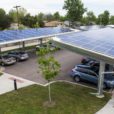While the heightened ability for trees to sequester carbon makes the concept of planting a trillion trees a compelling climate solution, it’s easier said than done. Trees will increasingly become an even more critical asset to mitigate the climate crisis, but by no means should they be proposed as a surefire solution to curbing global climate change.
The inception of the Trillion Trees concept was in 2001, when three major conservation organizations— the Wildlife Conservation Society, World Wildlife Fund, and Birdlife International— came together to put forth a new initiative that encourages forest growth and health. Since then, variations of their mission have been mimicked by viral YouTube sensations; even Tesla founder Elon Musk joined efforts to plant trees.
Ok, sounds legit, will donate 1M trees
— Elon Musk (@elonmusk) October 29, 2019
While organizations, such as the ones working on a Trillion Trees, are doing critical work to advance the sustainable use of the environment and natural resources, their efforts have a complicated past. Conservation organizations have, at times, been controversial in perpetuating the idea that ecosystems can be better protected without human influence. This “Western construct” of nature has resulted in the displacement of thousands of indigenous people, who have been forced out of native lands by conservationists who justify their actions as measures to protect the environment.
Philosopher J. Baird Callicott articulates this distorted conceptualization in his essay, Contemporary Criticisms of the Received Wilderness Idea, writing “The wilderness idea is associated with outmoded equilibrium ecology and ignores the ecological impact of at least eleven thousand years of human inhabitation.” While conservation organizations tout planting a trillion trees around the world, some of us in the environmental space can’t help but think about the multitude of implications this type of initiative may bring with it.
A trillion more
In February of 2020, Republican Congressman Bruce Westerman of Arkansas introduced a bill titled the Trillion Trees Act (H.R.5859), which would plant a trillion trees across the globe by 2050 and implement more sustainable forestry management parameters. The contents of the bill aim to increase the carbon storage capacities of forests and argues that planting this many trees can sequester enough carbon to curb climate change, despite the legislation simultaneously promoting logging. The bill received praise from President Trump, whose administration has historically dismantled environmental legislation and weakened regulatory policies for polluting industries.
While the bill is a step in the right direction and strives for bipartisanship, the language insinuates that simply planting enough trees will be sufficient to mitigate climate change, drawing attention away from the numerous other complementary solutions this crisis requires.
In a press release from Rep. Westerman, he claims:
“Recent scientific studies estimate that globally, there is room for nearly an extra 1 billion hectares of canopy cover, which could store at least 205 gigatons of carbon. Such storage would constitute nearly two-thirds of all man made carbon emissions since the beginning of the Industrial Revolution.”
This is all well and good, except the study being referenced has been highly criticized for publishing misleading results and interpretations about the potential for massive tree restoration projects to sufficiently mitigate climate change. In one critique, a group of scientists provided technical comments for the original study, claiming that researchers had only accounted for half of all anthropogenic emissions, and provided inaccurate estimates for tree coverage and carbon sequestration capacities. These comments, along with others, warn that forest restoration and planting more trees will not nearly be enough to reduce emissions at the scale required.
Although the Trillion Trees Act may have good intentions, it doesn’t do nearly enough to work towards protecting the integrity of our environment and communities on the frontlines of climate change. For one, this effort does nothing to stop planet-warming emissions or prevent industries from continually spewing more into the atmosphere at alarming rates, nor does it incentivize the necessary transition away from fossil fuels our systems require. The bill fails to mention where these trees will be planted, besides that it will be a global effort, or even who will actually be carrying out the task, which signals that many local communities wouldn’t have any say in how this gets done.
To make matters worse, Rep. Westerman, along with fellow key bill sponsors Republican Representatives Kevin McCarthy and Garret Graves, have heavy pockets filled with oil and gas funds. This poorly manufactured climate solution is another scapegoat for a more nuanced form of climate denialism and diversion. It does not benefit vulnerable communities, or populations subjected to environmental injustices, it seeks to pad the pockets of politicians, big oil, and the logging industry — all of whom contribute to the degradation of this planet. This is only one part of the solution — one side of the coin — and without more holistic policies, we risk perpetuating the rampant inequalities the climate movement works to eradicate.
The legislation is merely a band-aid for the much larger planetary gash we have inflicted on our natural and societal systems.
Struggling Saplings
The most recent effort to plant trees on a massive scale was carried out by Turkey in November of last year. Turkey planted nearly 11 million saplings in order to enhance forest health, and they broke a world record doing so. But, at the start of 2020, nearly 90% of the saplings that were planted were reported to be dead. In an article from The Guardian, Turkish officials attributed the dead saplings to a lack of rainfall and water, as well as being planted in the wrong place at the wrong time. Since volunteers with a lack of forestry expertise planted most of the trees around the country, the saplings struggled with ill conditions from the get-go. The expedited execution of planting millions of trees at once, without taking into consideration the conditions in which trees need to actually thrive, explains why Turkey’s efforts went awry.
Turkey exemplifies that if we’re going to be successful in planting millions and trillions of trees, it must be a concerted and methodical effort to enhance the existing forest we have instead of trying to freely plant trees in any open space. Trillion Tree initiatives have a lot to learn from this experience, and they can begin to understand that planting trees is more complex than just putting a seedling in soil.
No one will argue that planting trees is bad, and the widespread endorsement of planting trees is undoubtedly a good thing. Trees and other nature-based solutions will be a critical component of the policies needed to address the climate crisis. Getting more people involved and engaged with these solutions helps build a stronger sense of environmental stewardship. But in practice, planting millions and even trillions of trees might not be our best solution to taking rapid, immediate action on climate change.
A path forward
Planting trees and restoring forests will be, without question, crucial components to the breadth of solutions we must implement in order to address the climate crisis, but it can’t be the only one.
So, where do we go from here?
To start, we can begin to think about how to incorporate elements of forest restoration into climate and environmental policies. These types of initiatives can provide jobs and livelihoods to those who need it, or those who may be impacted by the transition to a sustainable economy. This is an opportunity to directly engage groups around the world in crafting these solutions, and policies must recognize that these communities need to have a voice in the conversation. In order to create just and equitable solutions, everyone needs to have a seat at the table. Understanding how native knowledge and true ownership over stewardship of the land can help foster proper reforestation efforts.
One of the most powerful mechanisms in our policy arsenal is the implementation of carbon pollution pricing, which not only effectively reduces emissions, but also unlocks billions of dollars to be invested in areas such as clean energy, green infrastructure, and creating more resilient communities. These investments are critical for a viable future in the face of climate change, and ensure that we transition away from fossil fuels and towards a sustainable economy. While trees are valuable, they cannot provide the same level of benefits that other comprehensive climate policies strive to deliver.
Climate XChange’s recent study of California’s cap-and-trade program revealed that not only was the policy an effective measure to cut pollution, but the calculated climate and health benefits were nearly five times greater than implementation costs. The study proves that, beyond emissions reductions, climate policies can have compelling health benefits and co-benefits that enhance both our environmental and social systems.
As the concept of planting trees on a global scale becomes popularized, it’s important to understand that planting a trillion trees does not absolve us of our responsibility to combat the climate crisis far beyond methods of solely restoring forests.









